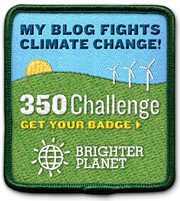There is of course the way our former neighbor chose: with his .22.
When I commented: "too bad that you are so afraid of them" He replied - "Oh, I'm fine with snakes, they take care of the darn packrats - but you know, the wife..."
No photos of those calamities here, for sure.
But some of my own older photos also bug me in hindsight: they show the snake in an impressive pose, reminding of a cobra ready to strike. The one above I have used over and over. Those photos portray our Western Diamondback as something he really isn't: aggressive and dangerous.
 |
| Frodo and Tana barking from the right, Cody and Bilbo (not visible) from the left, Leika, the wolf, is to smart to get involved |
In fact it took four dogs barking their hearts out and me with my snake stick (and terrified for the dogs) to make him that angry. I'm happy to say that it is an old picture.
Our male dogs' hysterical reaction to snakes forces us to capture and move some snakes that make a straight line for the row of dog beds on our patio. I used to take pictures - hoping to use them for identification of repeat appearances. Even with more reliable methods (paint marks on the base of the rattle) we found very few. Experienced herpers tell me that snakes have a strong aversion to human smell and remember and avoid locations of traumatic experiences. I still believe that moving them about 500 m north simply offsets the route of their annual east west migration across our property enough to make them miss the patio. Anyway, those pics are purely utilitarian.
 |
| Tiger Rattlesnake wrangled into photogenic loops |
There is a type of esthetic, well composed pictures appearing in all kinds of publications: The snake is looped decoratively in a natural setting, and since snakes have no discernible facial expression for grumpiness the pictures look fine at the first glance. The snake's pose tells me that an expert snake wrangler was involved. By now I have witnessed that kind of 'gentle directing' too often to appreciate the results any more than 'natural background' pictures of insects that are posed on a green leaf held by a clasp on a tripod or placed on a nice neutral rock in perfect light: they may be more pleasing than bugs on a dirty white black lighting sheet, but they are hardly more natural (a little deceiving sometimes, though).

There are very good photos taken in displays terraria where snakes have been kept successfully for years. These exhibits do a great service by safely introducing the public to the beauty of snake and hopefully convince the visitors that the reptiles are worth their respect and protection. The photos portray usually calm, content snakes as well as the artistry of the terrarium designer but there should be no pretense that we are seeing a natural setting.
By far my favorites are the photos of undisturbed snakes in their natural habitat (or what the snakes claim as their habitat, like nice cool patios). They are sometimes awkward because of the snake's elongate body shape and they often have to be shot through shrubbery and brush. But they provide information beyond just the fact that a certain snake species was seen by the photographer. They tell of the snake's behavior and preferences and of the photographer's patients and observation skills - and often - luck.
 |
| A resting Diamondback that I found because a covey of quail kept pointing at him |
Different from mammals and birds, snakes are heterotherm: Their body temperature depends on the temperature of the environment and they have only behavioral means to regulate it. For rattlers in Arizona this means to be mostly hidden and inactive in winter, day active in spring and fall and night active during the hottest time of the year.
 |
| This one rested at night close to my black light. I passed him again and again before he gave his rattle a warning little shake that I first mistook for the call of a Desert Clicker Grasshopper. Notice the dilated pupils. |
Cool desert nights are spent tightly curled and snuggled into the warm sand. The snakes keep such a low profile and lay so quietly that I usually discover them after stepping over them or when watchful quail coveys betray them in the early morning. Check out the pupil in the night time photo: it's dilated like our own in the dark.
 |
| A Mojave Rattler on the 'south forty' of our property - we left her there with some trepidation because she seemed ready to soon produce more little Mojaves with possible neurotoxin loads |
In the morning the snakes stretch out under the first warming rays of the sun. Not having a breast bone, they are able to spread their ribs and flatten their bodies to expose as large a surface area as possible.
In this position the are less photogenic, but the shot shows that the photographer didn't disturb the snake's normal behavior.
 |
| Bathing rattler, Photo by Jimmi S. |
Of course it can also be too warm here in Arizona, and most snakes seem to cool off in the shade or even under ground. But if you have birdbaths or flat ponds around, you can also observe another thermoregulatiory behavior: the dip in the pool. I see Gopher Snakes do this more often than rattlers.
 |
| Christopher James Vincent's photo of Cartman, a Western Diamondback Rattler swallowing a Mourning Dove |
Undisturbed snakes provide many great photo opportunities: My friend CJ Vincent made his 3 acre property in between Tucson and Catalina into a beautiful nature preserve (
WOW Arizona! open to the public by appointment). He is so comfortable (and on a first name basis) with the local resident rattlers that he can observe them hunting and feeding.
This photo of competing male rattlers was posted years ago to the photo gallery of the AZ Star. I down loaded it to my computer long before I started posting on the internet, writing a blog or thinking much about copyright. So if you should be the photographer - I went through the whole wildlife section of the gallery without finding your name - please contact me!
 |
| Rattlers mating by Axel Elfner |
Sometimes a well chosen detail is more impressive or informative than a full body shot.
 |
| Portrait by Margie Wrye |
And then there are the shots that aren't so great, but they come with a personal story dripping with emotion or in this case adrenaline: Last month I was giving a talk at Southwest Wings about Sphinx Moths' attraction to Datura flowers. So at night at Pat Sullivan's place in Ramsey Canyon I was sitting next to a beautifully blooming Datura plant to shoot some last photos. I heard a 'swishhh' and saw the brown and yellow pattern of a snake gliding through the grass very close to my thigh. I had been playing with a huge tame Gopher Snake that afternoon. This snake seemed as long and had similar colors - making me think that this was a Gopher as well. So I kept shooting my moths and actually talked to the snake (hey, we were both lonely and no one could hear us). I nearly reached out to touch it.
 |
| Black-tail Rattler (35 mm lens, uncropped) |
The snake's head rose above the grass like a telescope, looked at me, then pointed into the Datura, withdrew, came back into view...and suddenly appeared awfully big and triangular...not a Gopher, but an unusually long Black-Tail Rattlesnake. Since I was weighed down by two cameras, collecting pack and flash light, there was no way to scramble away quietly. So I stayed and instead took some pictures that suffered somewhat from being too close.
And then of course there are all the shots that I missed because I had no camera at hand: the one and only Tiger Rattle Snake in our back yard, the one time we saw a Diamondback swallow a Sonoran Desert Toad, the time when our Husky Tana seemed mesmerized by dancing male Rattlers in Tucson Mountain Park...
Those are always the best ones - in my mind at least.
 |
| Painted rock by me |
And who says that they have to be photographs, anyway? This painted rock once made a woman leave my art booth: 'I know it's not real but I can't stand to be near it'. Can't please them all. It sold for a good price to someone else.






















